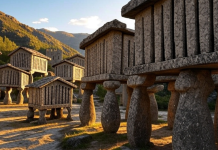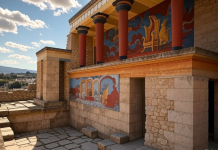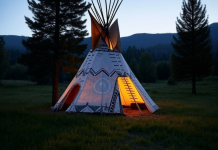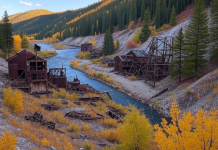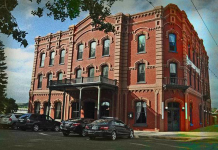Early life in Montana, particularly in the context of its indigenous peoples and the first European settlers, is rich with cultural and historical significance.
Before European exploration and settlement, Montana was home to numerous Native American tribes.
Native Tribes:
The territory of present-day Montana was inhabited by tribes like the Crow, Cheyenne, Blackfeet, Assiniboine, Gros Ventre, Kootenai, Salish, Pend d’Oreille, and Shoshone, among others. Each tribe had its own unique culture, language, and way of life, often deeply connected to the land.
These tribes lived off the land through hunting, particularly bison, fishing, and gathering. Their early life involved a nomadic or semi-nomadic existence, following the migration patterns of animals or moving with the seasons for optimal living conditions.
Life was not just about survival; there was a rich tapestry of cultural practices, including storytelling, art, and spirituality. Inter-tribal relationships ranged from alliances to conflicts over territory and resources.
European Exploration and Settlement:
The first recorded European explorers were likely from the expedition of Lewis and Clark (1804-1806), who traveled through Montana on their journey to find a route to the Pacific Ocean. Their expedition documented much of the region’s geography and wildlife.
Following exploration, fur trappers and traders, particularly from the Hudson Bay Company, the North West Company, and later American interests like the Rocky Mountain Fur Company, moved into the area. This era brought the first significant non-indigenous settlements, albeit temporary, like trading posts.
In the 1860s, gold was discovered in Montana, leading to the Montana Gold Rush. This event brought a rush of settlers hoping to strike it rich, leading to the establishment of mining camps that would eventually grow into towns like Virginia City and Bannack.
After the gold rush, many who came for gold stayed for the land. Ranching became a significant way of life, with vast open ranges for cattle. Homesteaders also began to claim land under various Homestead Acts, attempting to farm in an often challenging climate.
The influx of settlers led to conflicts with Native American tribes, culminating in battles and the eventual establishment of reservations. This period was marked by treaties, broken promises, and the significant reduction of Native lands.
Montana became a U.S. territory in 1864, and the structure of early life began to shift more towards what one might recognize today, with schools, churches, and community organization. Montana was admitted as the 41st state in 1889.
Life in Early Montana:
Early settlers faced harsh winters, isolation, and the challenges of building communities from scratch. Life was tough, with many living in sod houses or simple log cabins.
Despite the hardships, or perhaps because of them, there was a strong sense of community. Neighbors depended on each other for survival, leading to barn raisings, community gatherings, and mutual support.
Initially, transportation was by horse or wagon. The coming of the railroad in the late 19th century was a significant development, connecting Montana to the rest of the country, boosting its economy, and changing the lifestyle of its inhabitants.
Early life in Montana was characterized by a blend of indigenous traditions, the adventurous spirit of explorers and miners, the resilience of settlers, and the inevitable conflicts and changes brought by westward expansion.

